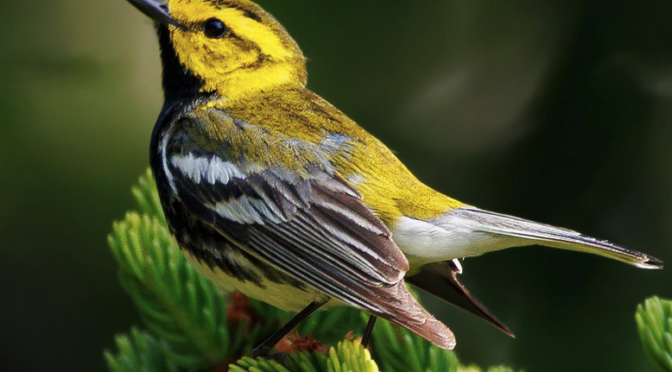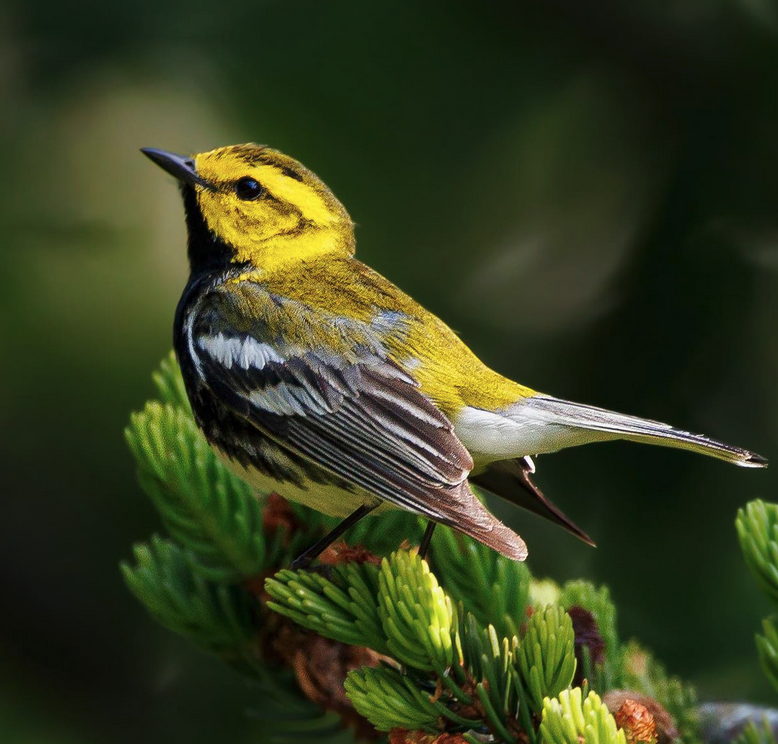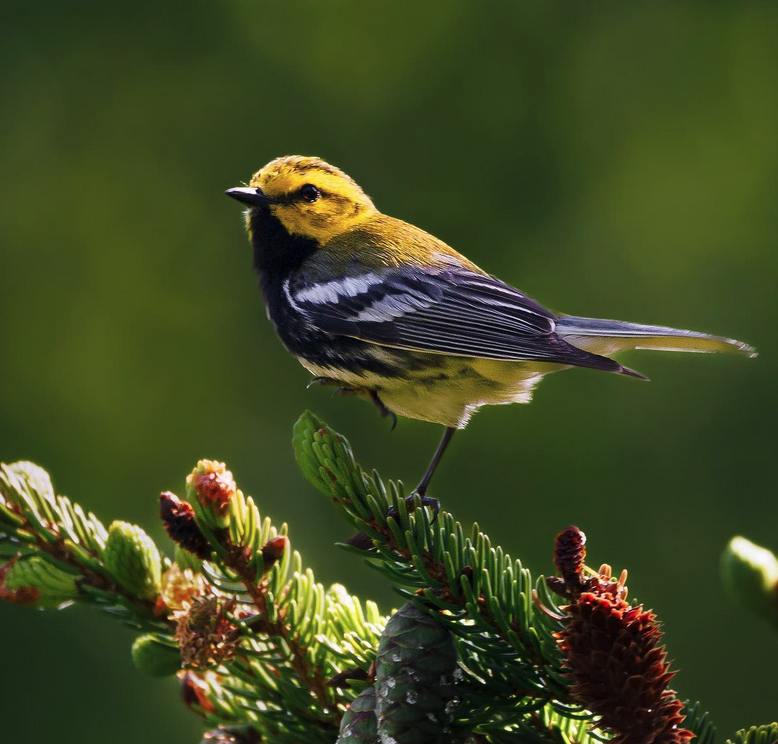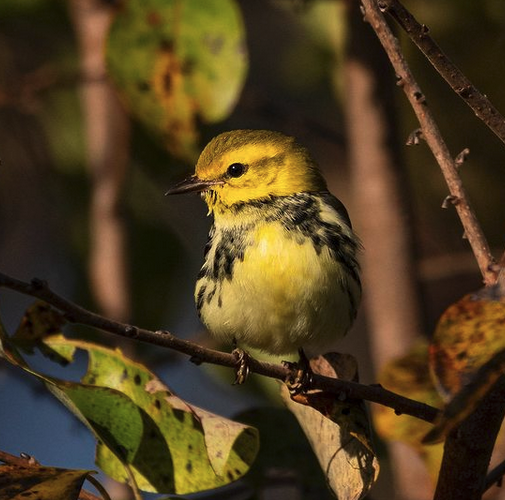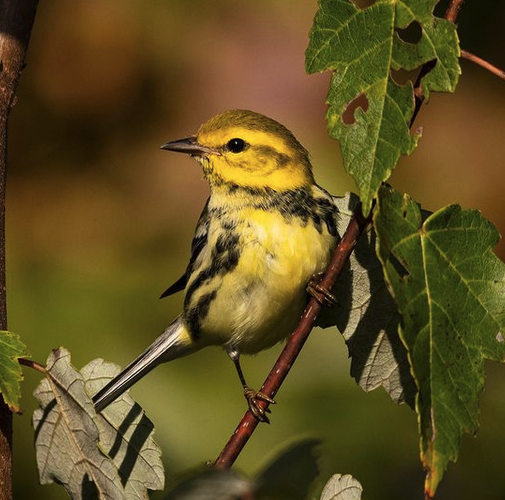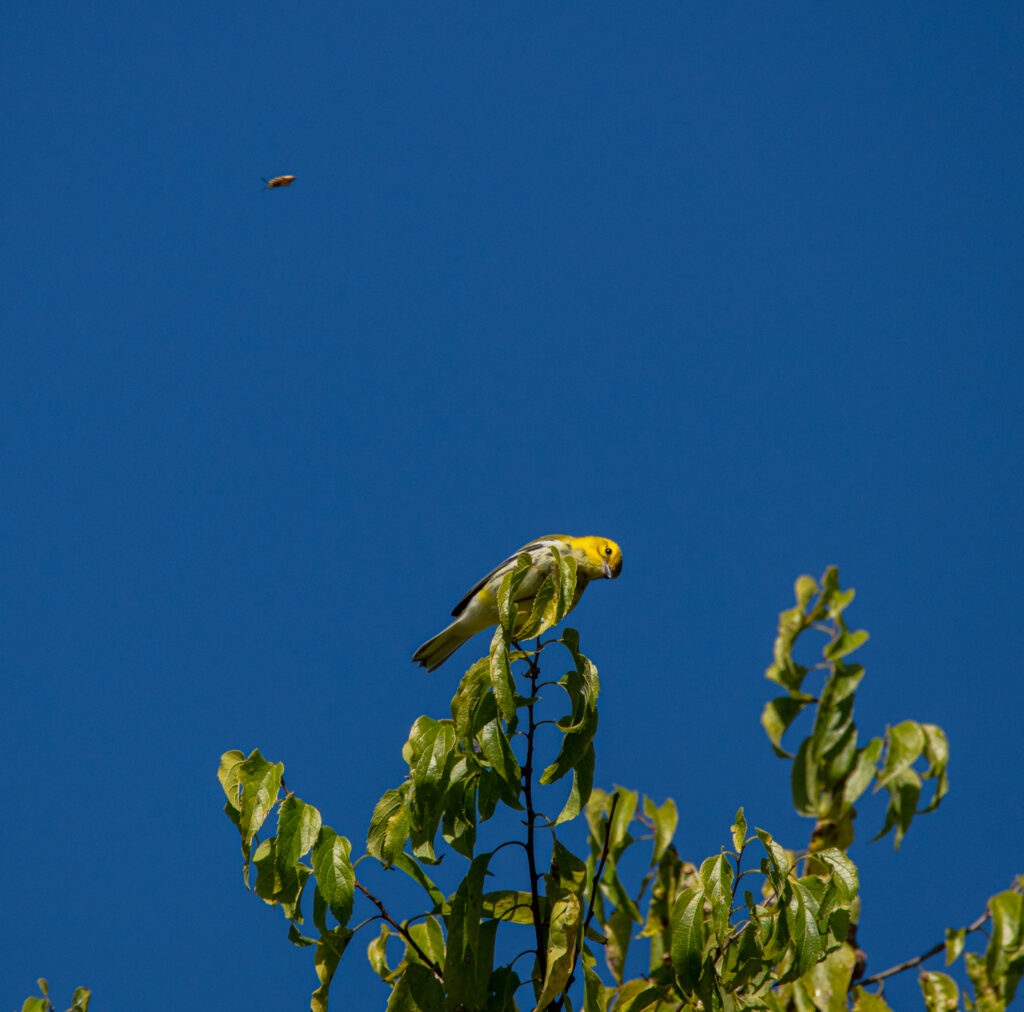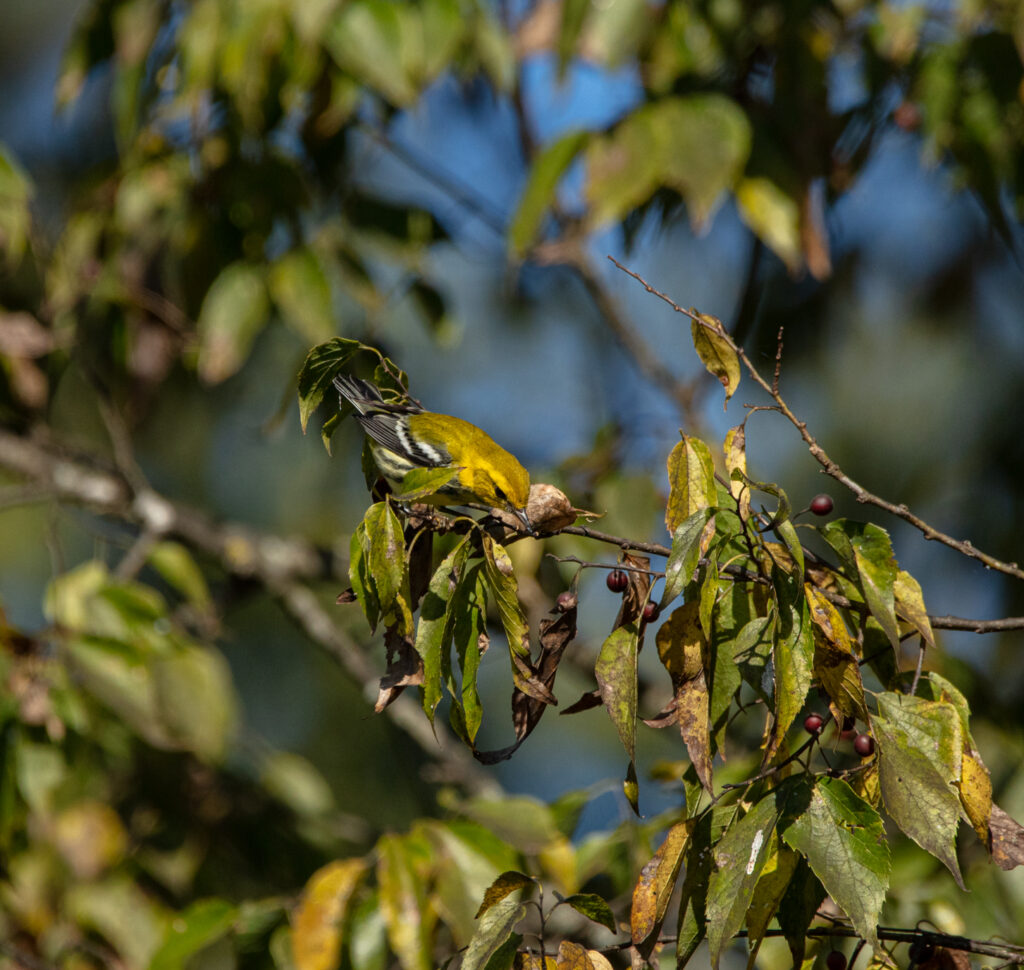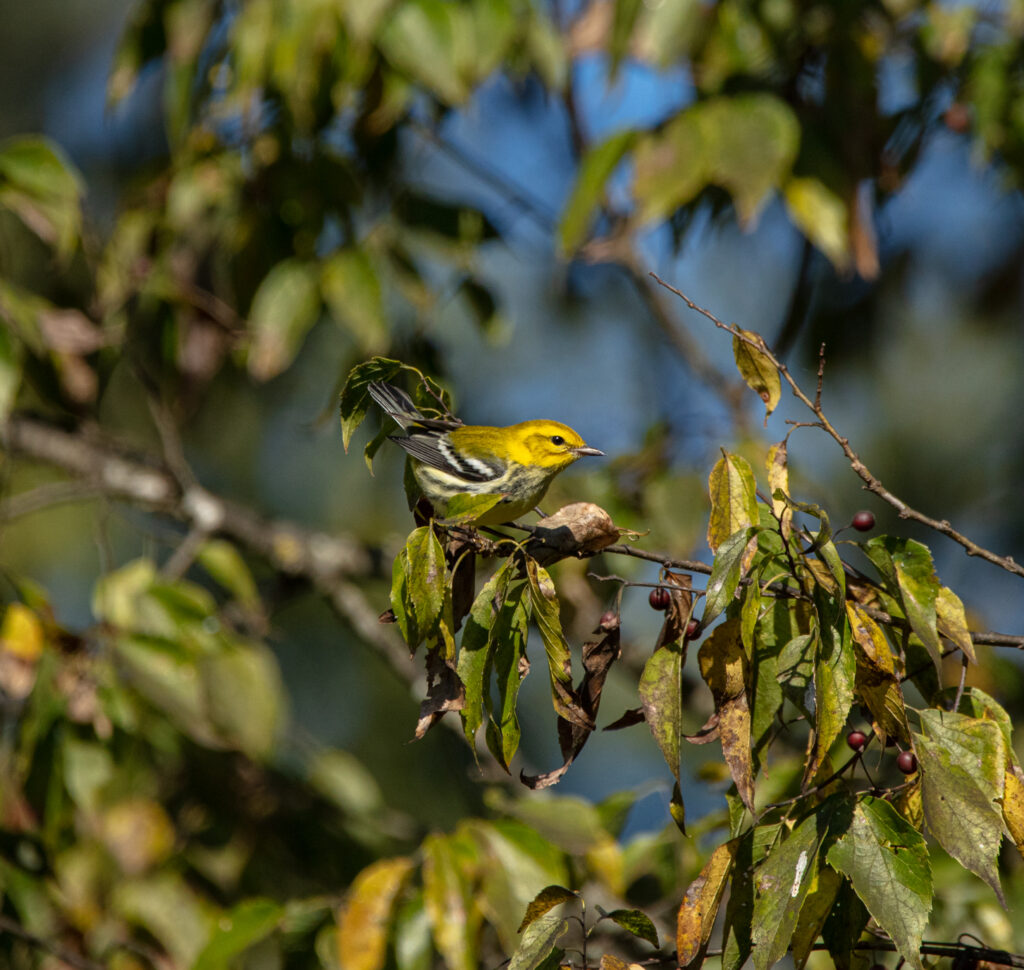By Sally Siko
With the arrival of spring, tons of new birds will be making their way into the Carolinas over the next couple of months.
Here’s a species, I was happy to see was reported in southern North Carolina last week, a Black-throated green Warbler. I love how visually striking these little birds are! That combination of yellow and black plumage really pops.

As is the case with most of our East Coast warblers, these guys are voracious consumers of insects. This means that the best time to look for them is in the morning hours after the sun has risen high enough to warm the leaves and get the insects moving.
Then it’s game on for hungry birds as they flit among the new leaves in the upper canopies, in search of a six or eight legged snack.

The Black-throated green Warbler is a spring and summertime resident of North Carolina. Curiously, they nest both in our mountains to the west and also in our eastern counties, generally eschewing the central part of the state, other than during migrational periods.
In the Appalachians, they are found in greater numbers at elevations above 2500 feet in mixed hardwood and coniferous forests.
The eastern breeders prefer areas containing American white cedar and along the edges of stands of Cyprus.
The best way to locate one of these beauties is to listen for their song, a high-pitched, rising buzzy “zeee-zeee-zooo-zeee,” in the upper canopy’s of trees. They’ll stick around until early October so we’ve got plenty of time to enjoy them before the year is through.
Aren’t they lovely?
Photo by @sally_siko of @bestlife_birding on my mighty mirrorless monster, the @canonusa #R5


